|
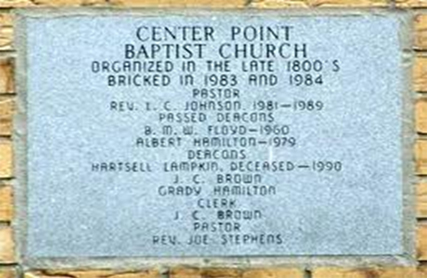
CHURCH ANNIVERSARY
CULTURAL RESOURCES
Sunday, March 10, 2013
Amos Anderson, Guest Cultural Resource Commentator
Seminary student; resident of Aimes, Iowa
I. Introduction
For as long as there have been African American churches in this country they have celebrated anniversaries. Some of these celebrations were held under the watchful eyes of slave-masters as many early black churches were not allowed to worship unless a white person was present. Some of these celebrations were even held by black churches with white pastors. Now that we can worship as we wish and when we wish, the Church Anniversary is one of the most sacred days on our church calendar.
Not every church celebrates its anniversary each year. Some do it every five years. Others do it every ten years or to mark major milestones such as the 50th or 100th anniversary of a church. Often, milestone anniversaries are held for at least one week or with special programs over a twelve-month period leading up to the actual day of the anniversary. Whenever it is held, it occurs after a lengthy period of planning by numerous members of the church. All anniversary celebrations are given a theme and an accompanying Scripture. In addition to someone addressing the theme, the church history is typically given.
Often a guest preacher is brought in to give the sermon for the occasion. Special music is offered by the choir(s), and youth typically participate in some fashion during the celebration. In some instances, church anniversaries are used to raise funds to retire a debt of the church. In others they may be used to bring attention to the programs of the church and milestones they have also reached. It is not uncommon for churches to list the names of all their boards, auxiliaries, departments, and groups on the anniversary program. Some even list past chairs for each group and former pastors.
II. Will Your Church Anniversary Be Relevant?
Throughout the country, church anniversaries will be held this year, but I wonder how many will be relevant to the needs and interests of the members of those churches and the communities in which they are located. In the 1800s up through the 1970s intermittently, there were African American pastors (unfortunately almost all male) who saw their role as community leaders as part of their pastoral duties. Pictures of some of these pastors are given below.
 |
|
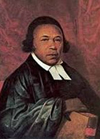 |
|
 |
|
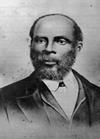 |
|
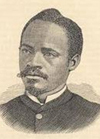 |
| Andrew Bryan |
|
Absalom Jones |
|
Henry McNeal Turner |
|
John Jasper |
|
E.K. Love |
 |
|
 |
|
 |
|
 |
|
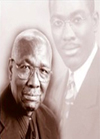 |
| Charles H. Mason |
|
Martin Luther King Sr. |
|
C.L. Franklin |
|
Samuel Proctor |
|
Frederick Sampson |
These pastors believed that they needed to use the status afforded them as pastors to help lessen racism, increase economic opportunities, and help shelter their members, as best they could, from police and general societal brutality. When their churches celebrated anniversaries, they were celebrating “how they got over.” Yes, time was spent on pomp and circumstance, but achievements which raised the standards of black folks’ lives were the main thing being celebrated in concert with giving thanks to God for being kept amidst tremendous suffering.
Today the church is largely resting on its laurels, patting itself on the back for things that it did before and in the 1960s. It has very few recent (of the last 40 years) accolades about which it can boast. Most of the work being done to fight The Scourge of the Unholy Seven (see below) is being done by a handful of small inner-city churches with limited funds1 and by a small number of mega-churches who are committed to community and social uplift.
What do the rest of the hundreds of thousands of black churches need to do to have it said they should celebrate being relevant to their communities today? There are more problems than one can list. Each church has issues that are particular to its members and its physical location. Churches located in rural areas will be relevant for different reasons than those in urban and suburban areas. However, there are issues that every African American church has in common. No matter where they are located, all churches have been touched by the scourge of drug-abuse, the prison-industrial-complex, HIV/AIDS, illiteracy, poverty/unemployment, violence (domestic, black-on-black, and by police), and absentee-fathers. These ills could be labeled the Scourge of the Unholy Seven.
Yes, these scourges have various causes, and many of them are structural, but all can be lessened by relevant churches that get involved and make a difference. The more I read the history of the Black Church of the 1800s and the first 70 or so years of the 1900s, I am amazed by how much the church did with so little money amid inhumane treatment by whites and the government. I am equally amazed by how little the Black Church has done from 1980 to the present. What’s the problem?
Albert Cleage sees the problem accordingly:
We have the same problem that Jesus had, but he was not afraid to attack the Scribes and Pharisees who were in control of the black community because he knew they were being used by the enemy. . . . Our churches also are being used to destroy our unity. Our churches are being used to block both political and economic unity. Our churches are being used against us. . . . You can’t free a people as long as their leaders are taking orders from the enemy.2
Reginald Davis describes the problem:
All is not well with black America. Oppression of blacks in America is still a reality. The black church has not responded to this oppression adequately, and therefore the black communities continue to suffer…. Either the black church will stand in solidarity with the poor and the oppressed and struggle with them against oppression as Jesus did, or it will stand against them. We are either for Jesus Christ or against Jesus Christ. We cannot be for Christ and leave the destiny of the oppressed in the hands of those who oppress and exploit them through unjust systems. Christ never left the destiny of his people in the hands of oppressors, nor did he look to the oppressor to solve socioeconomic problems of the oppressed. Christ struggled with the people against oppression, and he influenced others to join him in this revolutionary movement. …The black church puts too much emphasis on God solving problems and not enough on humans acting as co-laborers with God to solve the problems facing the black community….To be relevant in the twenty-first century, the black church must attack oppression and change the theological concepts and practices that cause it to become an irrelevant institution that simply maintains status quo or does business as usual. For example, the black church must consistently address the crucial areas of black life and focus its time, resources, and action to transform these crucial areas. The black church’s present mission should be directed toward eradicating the root cause of black oppression, apathy, and self-hatred. Once these crucial areas are properly addressed and dealt with, transformation is the by-product.3
Amos Wilson writes:
The church is silent in the face of tremendous deterioration of their quality of life—mounting unemployment, increasing poverty, crime, moral degradation; devastating miseducation, and even more devastating lack of education; overwhelming drug addiction and insensate violence, homicide terror, prostitution, disease, and corruption; in the face of children having children, social incivility, a youth culture whose raucous music speaks of nihilism, rape, robbery and murder, the degradation and venal hatred of black women, of everything Black….4
William R. Jones describes the problems as what he calls “social quietism.” He writes:
[It is] a refusal to reform the status quo, especially where traditional institutions and values are involved. Conformity, accommodation, and acquiescence are its disgusting marks. Quietism becomes our operating principle if we believe that economic, social, political correction is unnecessary, impossible or inappropriate. Corrective action is unnecessary, for instance, if we believe that some agent other than ourselves will handle it.5
Each of these writers cogently state why the church is doing less than what it should be doing. Their remarks can be summed up accordingly: A relevant twenty-first-century church is one that courageously and vigorously continues to assess its mission and goals to push a relevant, revolutionary, Jesus agenda for the people in its community. Through how it apportions its budget, it gives signal attention to the psycho-social conditions that cause communities and individuals to deteriorate, and quite importantly, it does not seek to maintain the status quo. Its works are not determined by its size, but rather by its vision and will to be more than a building that opens once or twice each week to casually serve those within its doors and offer them a quick-fix spiritual high that quickly evaporates when faced with real-life problems.
III. Our Priorities Show What We Celebrate
If today’s black church has the courage to take a look at its priorities (shown through its budgets) and the will to change, it can! Budgets always tell us everything we need to know about churches as they celebrate each anniversary. If budgets are top-heavy with staff salaries, worship accoutrements (robes, sheet music/hymnals, church bulletins, communion trays, flowers for altars, Sunday School and Bible Study literature, etc.), and mediocre insular programs (unlicensed nurseries, two day-a-week senior center programs, theologically puny youth programs, and the like), then these reflect our priorities.
James Henry Harris writes about simple yet important things that black churches can do to serve this present age. By making these things our budgeted priorities, we will add to the rich legacy of the Black Church.
Black churches can also adopt public schools, into which they can send volunteers to “testify” to young blacks about the value of quality education. Churches could provide education mentors to work with teachers and counselors in order to help children increase educational achievement, develop self-esteem, and enhance moral and intellectual integrity. This would be the first step toward a decentralized educational structure that would enable communities and churches to take control of the future of our young people. In this scheme, churches would monitor the progress of their young parishioners from Kindergarten through 12th grade and find tutors or provide volunteers qualified to teach subjects in which children need help. . . .
Third, black churches need to pool their financial resources by withdrawing funds from institutions that do not address the development needs of the black community. . . . In order for the black community to become a viable place for external investment, blacks will first have to invest in themselves. The church must invest in black youth and in the black community before society will invest in the black community.
Fourth, each black congregation should assess the needs of its constituents within a certain radius of the church. This will enable the pastor and staff better to understand their ministry contact and to address specific community needs. For example, some neighbors need to learn how to read, while others may need better access to medical care. Still others may simply need to know there are people nearby who care about their families and are willing to offer a helping hand.6
IV. Churches Need to Merge to Increase Their Effectiveness
I am sure that more than a few will be confused by me discussing mergers on the occasion of the church anniversary, but hear me out. Anniversaries are a great time to do a thorough assessment. Like it or not, as many churches throughout America prepare to celebrate their next anniversary, they need to be realistic and face the fact that it is time for them to merge with other churches to continue to carry out their mission and the work given the Church by Christ. These churches know that they do not have the personnel or members to be even partly effective. The critical needs of the black community and the continued erosion of its families, schools, civility, health, and financial well-being make clear that we can no longer afford hundreds of dying churches that can no longer serve their communities.
If your mission matches that of a sister church, consider the radical idea of a merger. In fact, you can use the occasion of your next church anniversary to study the plan, and if time permits, carry out the merger the following year on your church’s anniversary. Instead of seeing it as the time when your church closed its doors, view it as the time when your church had the courage to say that its vision to serve was more important than a pastor having a job and members having a church where they built memories. Ann Michel writes:
In their book Better Together: Making Church Mergers Work (Jossey-Bass, 2012), Jim Tomberlin and Warren Bird examine the recent wave of church mergers. The book makes the bold claim that mission-driven mergers have the potential to transform the church world by expanding the impact of strong churches while revitalizing plateaued or declining churches.
Their research reveals some noteworthy facts and trends, such as:
- National surveys document a trend since the 1990s toward a greater number of mergers.
- Two percent of all Protestant churches in the U.S. merge each year. Another 5 percent say they have talked about merging in the future.
- Mergers are occurring among churches of all sizes and types in all kinds of settings.
- Large churches, including megachurches, are increasingly involved in mergers as they seek to expand their ministry outreach and reach new constituencies. One fifth of megachurches have been involved in a merger.
- Every week more than 5 million people attend multi-site churches. And one in three multi-sites is the result of a church merger.
- Eighty percent of the 300,000 Protestant churches in the U.S. have plateaued or are in decline while many churches in the growing 20 percent are in need of more space.
- Be clear that the authors do not advocate the all-too-familiar model of merger in which two struggling churches combine in a last-ditch effort to stay afloat. With survival as the overriding goal, the focus in these mergers usually remains inward, with each congregation jockeying to maintain its identity and influence within the union.7
Alice Mann observes: “Often, merged congregations spend a lot of time deciding whose candlesticks will be used at Christmas and not much energy asking ‘Who lives in this community and how could we reach them?’”8 This merger paradigm almost always fails because it seeks to maintain the status quo.
Leading and Joining
Instead, Jim Tomberlin and Warren Bird see promise in mergers where at least one partner is healthy and growing. This “lead church” contributes its healthy DNA to the union, establishing the cultural pattern for the combined church. The “joining church” typically comes to the union having reached the point of accepting that the pain of change is less than the pain of remaining the same. In successful mergers, both leading and joining churches must be prepared to undertake risk and change.
Others see a merger as a way to expand their reach into the community or to become more diverse by developing a multi-ethnic presence. In other situations, mergers can be a way to expand the influence of strong leaders or facilitate pastoral transitions. Shared ministry has the potential to increase resources, lower overhead and personnel expenses, and increase outreach.
Mission Is Key
Regardless of the motives for considering merger, Mr. Tomberlin and Dr. Bird maintain that mergers today succeed when there is a united, compelling vision and mutual desire for missional outreach—not just the imperative of institutional survival. A mission-driven merger is motivated by the desire to better serve the community and to extend the reign of God. The merging congregations must ask if they can accomplish more together than separately for the glory of God.9
Notes
1. White, Jeremy and Mary de Marcellus. Draft of Faith-Based Outreach to At-Risk Youth in Washington, D.C.: Report of the Partnership for Research on Religion and At-Risk Youth (Philadelphia: Public/Private Ventures, forthcoming).
2. Cleage, Albert B. The Black Messiah. (New Jersey: Africa World Press, Inc., 1995), 79.
3. Davis, Reginald F. The Black Church: Relevant or Irrelevant in the 21st Century? (Macon, GA: Smyth & Helwys, 2010).
4. Wilson, Amos. Blueprint for Black Power: A Moral, Political and Economic Imperative for the Twenty-first Century. (New York: African World Infosystems, 1998), 827.
5. Jones, William R. “The Religious Legitimation of Counterviolence: Insights from Latin American Liberation Theology.” In Lonnie D. Kliever, ed., The Terrible Meek: Revolution and Religion in Cross-cultural Perspective (New York: Paragon Press, 1987), 200.
6. Harris, James Henry. “Practicing Liberation in the Black Church.” The Christian Century, June 1990.
7. Michel, Ann. “Mergers Can Help Churches to Thrive—Not Just Survive.” The United Methodist Reporter, December 20, 2012.
8. Mann, Alice. Can Our Church Live? (Herndon, VA: The Alban Institute, 2000).
9. Tomberlin, Jim and Warren Bird. Better Together: Making Church Mergers Work (San Francisco, CA: Jossey-Bass, 2012).
| 
